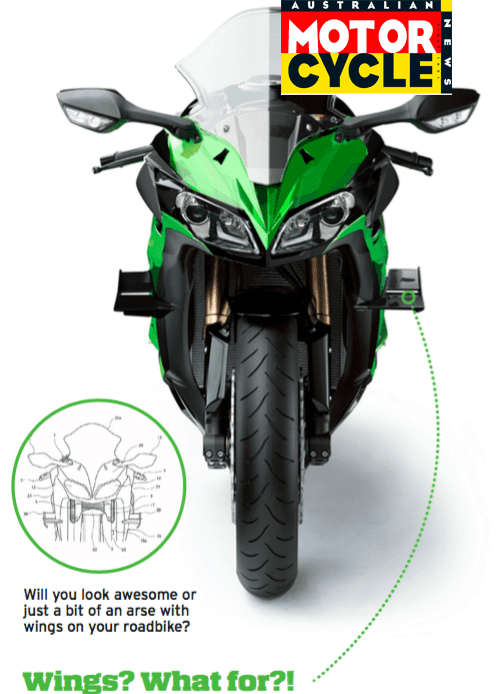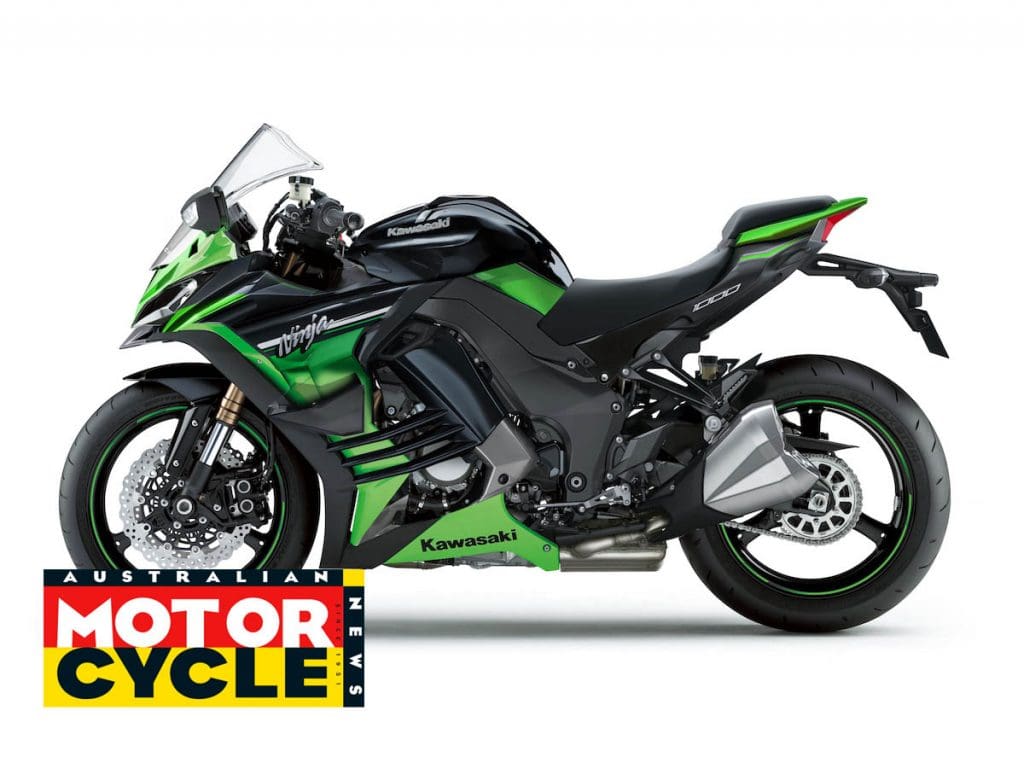Japanese insiders say Z1000 will spawn multiple models, including an all-new retro-styled naked
This computer-made image gives the best insight so far to what Kawasaki’s next-generation Ninja 1000 sports tourer will look like as the firm works to revamp and extend its Z1000-based range.
The pictures here are derived from patents that show a restyled version of the Ninja 1000 incorporating the sort of MotoGP-inspired winglets that are already such a notable feature on the firm’s H2 and H2R supercharged superbikes.
According to our Japanese sources, both the naked Z1000 and faired Ninja 1000 will both be revamped for 2017, with updated models appearing at the Cologne Intermot show towards the end of this year. The changes are said to fall short of being full replacement models but will include technical and visual upgrades as well as the addition of a completely new derivative.
The faired sports-touring version of the Z1000 – called the Ninja 1000 or Z1000SX depending on where it’s sold – is among Kawasaki’s most successful models. Despite being a spin-off of the naked machine, it’s more popular than the Z1000 in many markets thanks to its versatility and affordability. Patents published earlier this year, focussing on Kawasaki’s development of aerodynamic winglets, clearly show such addenda bolted to the sides of a Ninja 1000-style machine with significant styling updates.

Although the patent drawings are not to scale and understandably focus on the winglets rather than the rest of the bike’s appearance, they do show a recognisable Z1000-based chassis design and an overall shape inspired by the Ninja 1000.
As well as the addition of winglets (see breakout), other changes to the next-gen Ninja 1000, and set to be shared across its siblings, are likely to be focussed around making sure the bike meets current and imminent emissions rules. Like every other brand, Kawasaki is scrambling to ensure its range complies with the Euro4 regulations that come into force across Europe in January. Full ride-by-wire throttles are likely (the current Ninja 1000 has a hybrid dual-butterfly system that combines a physically-operated set of butterflies with a secondary computer-controlled set), along with more sophisticated traction control and yet more options in terms of riding modes.
The exact value of the winglets is debatable. Although widely adopted in MotoGP this year – and banned for 2017 – there’s still discussion over their precise function and efficiency. It’s likely their use in racing is in an effort to keep the front wheel down on the ground even when physics alone (a combination of acceleration, wheelbase and centre of gravity) would make a wheelie inevitable. In racing, the winglets may also aid straight-line stability, potentially allowing more extreme chassis geometry, and should assist in initial braking bite by ensuring the front wheel is firmly adhered to the track at the moment the brakes are first applied.
While much of this is unnecessary on a roadbike, the stability gains could be of use, but by gaining a patent on its winglet design, Kawasaki can try to prevent rivals from following the same route, so even if they’re purely cosmetic there’s arguably a benefit to patenting the idea.
Retro muscle?
The other big news is a still-secret retro-styled derivative, believed to be called the Z1000J. This bike will fill the role of the old ZRX1200 – which has long-since disappeared from most export markets but remains in production and on sale in Japan. Understood to have 1970s-style musclebike styling but to retain the modern engine and chassis of the Z1000, the Z1000J is believed to be part of a wider retro push planned by Kawasaki (AMCN Vol 65 No 20), which will also include a supercharged naked model. That bike is likely to use the Z900RS name, which has recently been trademarked by Kawasaki.
By Ben Purvis
